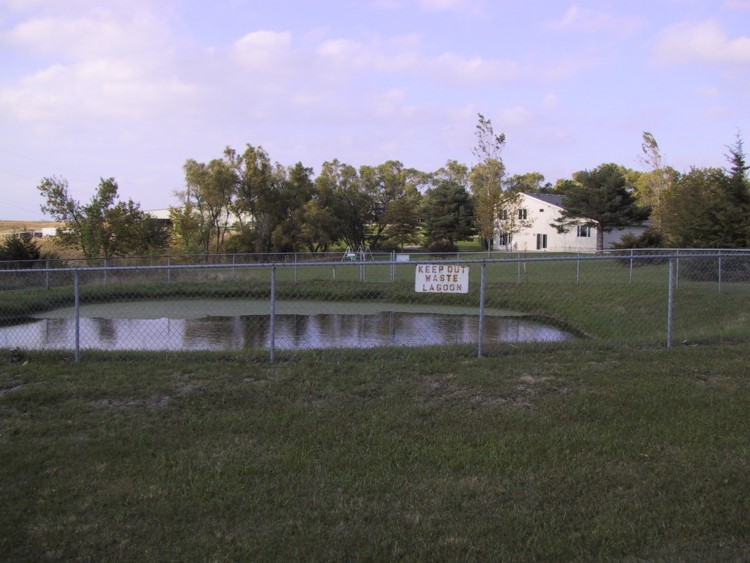Lagoon Water Levels - Onsite Wastewater Question of the Month – August 2022

Do you have questions about your private drinking water supply? How about wellhead protection, including the management of your private sewage treatment system? Send your questions by clicking on the ‘Email Us’ feature in the lower right corner on this web page. Questions will be addressed by Nebraska Statewide Extension Associate for Domestic Water & Wastewater, Becky Schuerman and/or other Extension Water Team Staff. One question and answer will be featured each month in the https://water.unl.edu newsletter.
Q: The water level in my lagoon stays at only about 2 feet. Is that a problem and how do I keep the water level higher?
A: For residential lagoons to function at their full potential the water level should be a minimum of 2 feet and a maximum of 5 feet in depth. So, a lagoon with a water level at 2 feet is just on the edge of maintaining full functionality to provide treatment processes for household wastewater.
Periods of drought often negatively impact the water levels in a lagoon. When this happens, additional water often needs to be added to the lagoon to raise the water level and allow for proper functioning to treat the wastewater within it.
Low water levels in a lagoon are most commonly the result of the lagoon being “oversized” for current use within the home. Lagoons, like all wastewater systems in Nebraska, are required to be a certain size based on the number of bedrooms in a home. When the lagoon is built, the home may be fully occupied by a family and so there are more people using more water. As children grow and move away or if a home is sold to different people with different water use patterns, the lagoon may be somewhat larger than is necessary.
Less commonly, low water levels can also be a result of a malfunction in the design of the lagoon or problems with maintenance of the lagoon such as allowing too much vegetation to grow up around the lagoon. The vegetation can draw moisture out of the berms of the lagoon and make some, although not a large, impact on the water levels. Certain vegetation such as duckweed or cattails can also grow on the surface or within the lagoon itself drawing water up into the plants and impacting the actual treatment processes of the wastewater within the lagoon.
Vegetation can be managed by a homeowner through careful chemical or mechanical removal of nuisance plants such as duckweed or cattails from the lagoon itself. It is imperative that you follow all directions and take safety precautions. Vegetation on the sides, or berms, of the lagoon is part of the proper function and maintenance of a lagoon. Mowing the vegetation to a height of approximately 6 inches can be done by the homeowner and should be done regularly.
If you suspect your low water levels may be from a structural issue within the lagoon or wastewater system you should consult with a certified wastewater professional. Additionally, a certified professional may be able to examine your home system to make recommendations on use patterns for the specific system. Otherwise, low water levels because of a change of water use within the home can be difficult problem to solve. If a lagoon stays at 2 feet in depth it should be functioning to treat wastewater. The biggest concern comes in the winter where you will need to spread out warm water use to ensure that the lagoon does not freeze solid during extreme cold periods.
For more information on residential wastewater lagoon operation and maintenance vist: water.unl.edu. To find a Certified Onsite Wastewater Treatment Professional in your area go to: http://deq.ne.gov/NDEQProg.nsf/OnWeb/Certification
*This article is based on original content by Meghan Sittler, former UNL Extension Educator.
This article was reviewed by Bruce Dvorak
Sign up for updates from UNL Water
